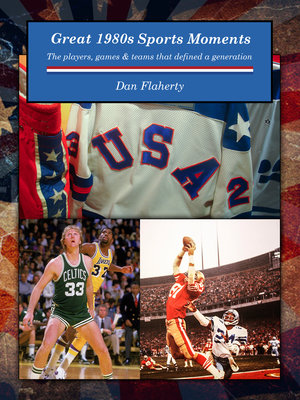1979 Nebraska Football: One More Time It Was Close But Not Quite
The 1979 Nebraska football team flirted with greatness and settled for being really good. For better or for worse, the ’79 Cornhuskers fit the program profile during this era.
READ GREAT 1980s SPORTS MOMENTS
Nebraska had been a consistent winner since Tom Osborne took over for the legendary Bob Devaney in 1973, but the Cornhuskers had an Oklahoma problem. Osborne lost his first five games to the Sooners. When Nebraska finally beat them and won the Big Eight’s Orange Bowl bid in 1978, they were forced into a rematch with OU—which the Cornhuskers lost decisively.
Osborne had a team that was simultaneously a respected national power, while also seen as Oklahoma’s little brother. Nebraska was ranked #8 to begin the 1979 season.
The running game was what it was about in Lincoln. Jarvis Redwine, a transfer from Oregon State, stepped into the lineup and went over 1,100 yards. He was supported by I.M. Hipp, Andra Franklin and Craig Johnson, who all cleared 500 yards and finished among the Big Eight’s top ten rushers.
When Nebraska wanted to throw, their quarterbacks, Jeff Quinn and Tim Hager, could target the nation’s best tight end in Junior Miller. His seven touchdown catches were easily the Big Eight’s best and in this offensive scheme in this era, his 23 catches marked him a modern-day Antonio Gates.
The Huskers opened the season with a 35-14 win over Utah State and then escaped a road trip to mediocre Iowa, 24-21. They were moved to #6 in time to host a nationally televised game with Penn State at the end of September.
Nebraska started poorly, with Penn State scoring the first two touchdowns, one off a Pick-6. Then the Cornhuskers got down to business. Hager connected with Miller on a short touchdown pass of 11 yards, and then hit the great tight end on a 70-yard scoring strike. Nebraska scored 28 points in the second quarter and never looked back on their way to a 42-17 win.
Even though it wasn’t a great Penn State team—Joe Paterno’s squad was ranked #18 coming in and wouldn’t make a major bowl game—it still qualified as a big-time statement win for Nebraska. They had dominated the Lions on the ground, winning rush yardage 298-160, with Redwine going for 124. When the next polls came out, Nebraska was in the top five.
There were no serious tests in October, blowing through New Mexico State, Kansas and, Oklahoma State and Colorado by a combined score of 173-10. Oklahoma State, on its way to seven wins under first-year coach Jimmy Johnson, was the only one of these teams even remotely capable of being on the same field with the Cornhuskers, who were ranked #2 in the nation by the end of the month.
Nebraska went to Missouri to open November. The Tigers were a pretty good team, and no one needed to persuade Osborne—the previous year, a loss to Mizzou cost the Huskers a chance to play for the national championship. This time Nebraska won, but it wasn’t easy in a 23-20 win. Another fairly close game, this time to a poor team at home—21-12 over Kansas State—resulted in Nebraska slipping to #3 in the polls.
The Cornhuskers blew out Iowa State to set up the season finale with Oklahoma. The Sooners had lost a non-conference game to Texas and were realistically out of the national title race. Nebraska was blocked out by fellow unbeatens Alabama and Ohio State, neither of whom they could possibly play in a bowl game.
It would take an inside straight to finish #1, but there was still an undefeated season and the not-so-small matter of simply beating Oklahoma still on the line when Nebraska went to Norman on November 24.
After taking an early 7-0 lead, the game proved to be the same-old, same-old when it came to facing Oklahoma. The Cornhusker defense, lacking All-American talent, was overrun by OU’s star running back Billy Sims. Nebraska trailed 17-7 with less than five minutes left when they scored on a trick “fumblerooski” play, where Quinn took the snap, set the ball on the ground and an offensive lineman picked up and ran for a touchdown. But the game ended at 17-14 and Nebraska settled for a Cotton Bowl date with Houston.
The Cotton Bowl was a good tough football game on a sunny day in Dallas. Houston led 10-7 in the fourth quarter, but a fumble on their own 31-yard line set up a Nebraska touchdown with less than four minutes left. The Cornhuskers had a 14-10 lead and the Cougars had a backup quarterback in Terry Elston in the game.
Elston ended up an unlikely hero. He led the team gradually down the field and faced a fourth-and-goal on the six-yard line. On that decisive play, Nebraska had every receiver blanketed. But Elson took chance and rifled it toward Eric Herring. It caromed off a defender and into Herring’s hands. Nebraska had lost another 17-14 game.
The Cornhuskers finished ninth in the final polls. The loss just added to the close-but-not-quite trend that would trail them for another fifteen years.

